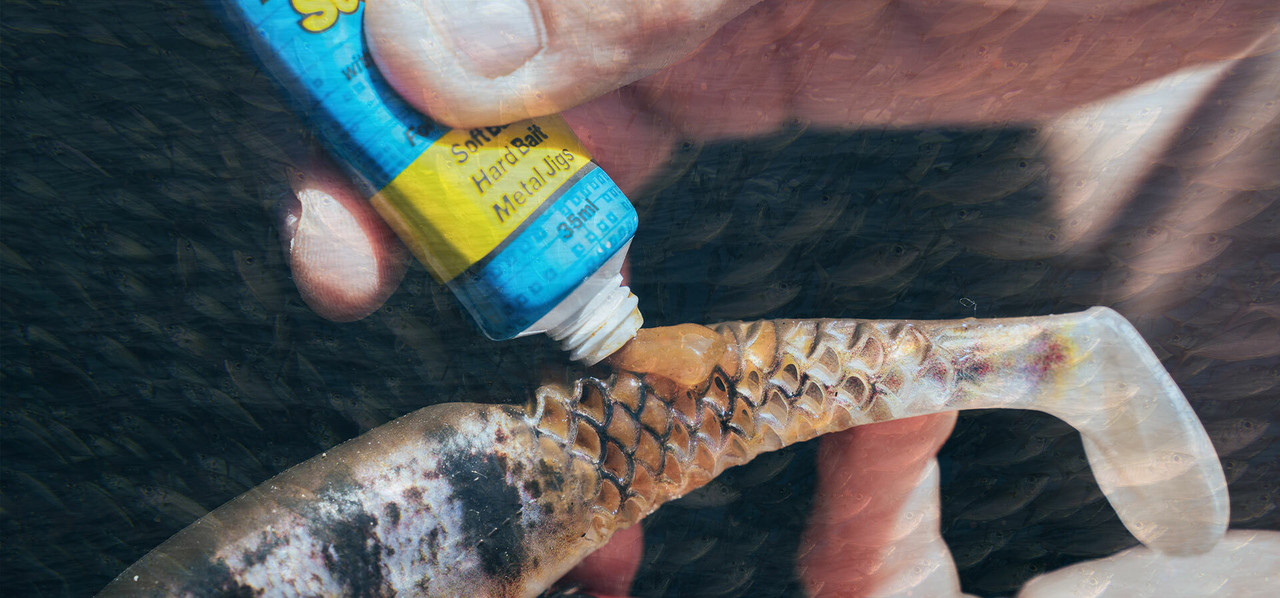A Tackle Shop Guide to Fishing Scents
The goal with any fish scent is to make your lure smell less like plastic and more like something a fish actually wants to eat. Understanding the different types of attractants and how to apply them effectively is the key to getting a real advantage from them. This guide will break down the different types of scents and how to use them.
A Note From Our Local Experts
"In the shop, the most common question we get is, 'Does this stuff actually work?' My honest answer is always 'yes, but it's not a magic bullet.' I've seen it make a real difference, especially in my own lure fishing. A classic example is with flathead. A fish might just 'bump' an un-scented soft plastic, but they'll often grab and chew on one that's covered in a good prawn or pilchard scent. That extra second or two that the fish holds on is your entire window to set the hook.
I remember once when I was fishing down Wandandian Creek in St. Georges Basin with a mate (Tony). We were both fishing Squidgy Fish, but I was pulling in one flatty after another while Tony was only getting the odd one. He eventually asked what my secret was—it was a Kokoda aniseed spray (no-longer available). It was that real-world example that had me hooked on scents. It's why I'll almost always have a tube of Pro-Cure, S-Factor or an aniseed spray in my lure bag."
- Ben Czulowski, Owner, Fishing Tackle Shop (Ocean Storm) | 20+ years in fishing and retail
A Deeper Dive: Gel vs. Oil vs. Spray
Choosing the right scent type is just as important as the flavour. It's about how long the scent stays on your lure in the water and what it can stick to.
- Gel Scents: Gels are thick and super-sticky. This makes them the best option for applying to hard-bodied lures, spinnerbaits, and metal jigs. A thick gel will actually adhere to a smooth surface and release a scent trail slowly.
- Oil Scents: Oils are thinner and are mainly used for 'marinating' soft plastics. Plastics will generally soak up the oil, holding the scent inside, which allows it to leach out continuously as the lure is worked.
- Spray Scents: Sprays are all about convenience. They are the fastest, easiest way to re-apply a scent, especially to soft plastics, without getting it all over your hands. A quick spray every 5-10 casts is a good way to keep a fresh scent trail.
Pro-Tips for Using Fishing Scents
- Less Is More: You don't need to bathe your lure in scent. A small dab of gel on the head of a soft plastic or near the hook points is all that's needed to create an effective scent trail. Overdoing it can just be a waste of product.
- Match Scent to Lure Speed: Scent is most effective on slow-moving lures like soft plastics and jigs, where the scent trail can linger. On a high-speed trolling lure, it will wash off very quickly. As a rule, re-apply a gel every 10-15 minutes or so, and a spray every 5-10 casts.
- Keep Your Scents in a Zip-Lock Bag: A tube of scent leaking in your tackle bag is a mess. Storing all your scents in a sealed zip-lock bag stops this from happening and keeps your other gear clean.
Frequently Asked Questions
Does the "flavour" of the scent matter (e.g., Shrimp vs. Pilchard)?
This is a classic debate. For many lure fishing situations, the primary job of the scent is to mask your human scent (from sunscreen, fuel, etc.). However, "matching the hatch" (using a prawn scent in an estuary or a pilchard scent offshore) is always a smart strategy. For some species, like whiting, aniseed-based scents also have a long, proven history of success.
Can I mix different fishing scents together?
It's generally not recommended. Scents are formulated by chemists to have a specific profile. Mixing them can create an unnatural combination that might actually repel fish. It's best to stick to one scent at a time, or at least wash your lure before applying a new one.
Do fish really like garlic scent?
Yes, this is a classic for a reason. While the exact science is debated, garlic is a powerful scent that does a great job of masking unnatural odours (like plastic or human scent). Many anglers find it stimulates a feeding response in species from bass to estuary fish, and it's a common, proven ingredient in many formulas.
Can I just make my own fishing scent?
You can, but it's a lot of mess and guesswork. The main advantage of a professional, lab-formulated scent from a brand like Pro-Cure or S-Factor is that it has been engineered to be super-sticky and long-lasting in the water. It's a proven product that saves you a lot of hassle and is guaranteed to be effective.



